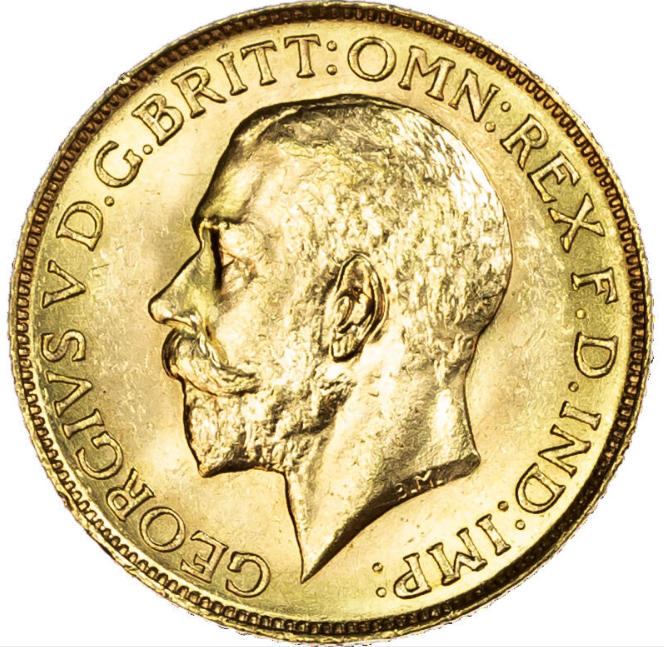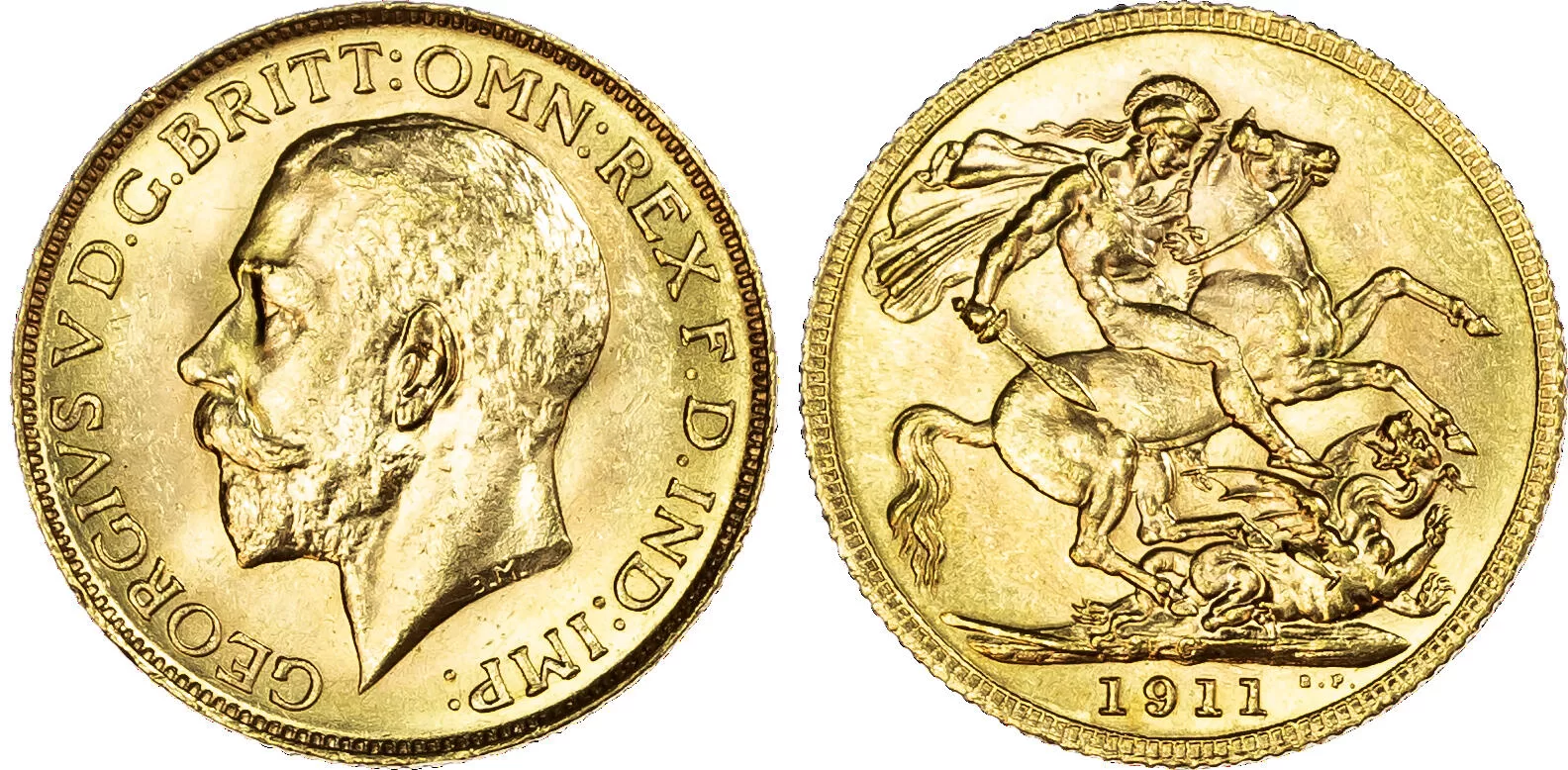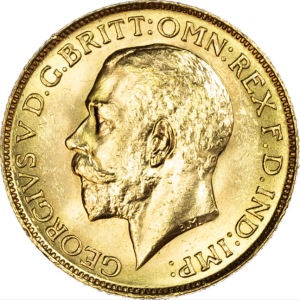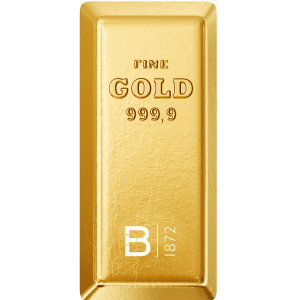Description
Sovereigns are one of the most popular coins for UK investors, as it is exempt from Capital Gains Tax and not subject to VAT. George V ascended the throne in 1910 on the death of his father, Edward VII. George was the second son, his older brother, Albert Victor, died suddenly in 1892 and George became the heir
apparent. He had served in the Royal Navy until his brother’s death . George married Princess Victoria Mary of Teck, who had been his brother’s fiancee, in July 1893 and they had six children.
Please note: the coin pictured is not the coin you will receive. The coin you purchase will be non date specific and chosen by one of our bullion team. Usual condition is Fine to Very Fine.
The reign of George V was a time of great upheaval and unrest across the world. Britain had been going through a period of political crisis, which was overtaken by the events in Europe when on 4th August 1914, Britain declared war with Germany. The First World War brought an end to a period of relative stability and was to pave the way for many changes in the Empire. There was a great deal of anti-German feeling and in 1917, the King distanced himself from his German connections, by changing the name of the British royal family from the House of Saxe-Coburg and Gotha to the more British sounding House of Windsor.
The first gold Sovereign for the reign of George V was struck in 1911 and they were minted in various years until 1932. The obverse shows a portrait of George V designed by Edgar Bertram Mackennal. The reverse design is Benedetto PistrucciÕs St George and the Dragon. Sovereigns were minted in London (no mint mark), Sydney (S), Melbourne (M), Perth (P), Ottawa (C), Bombay (I Ð only in 1918) and Pretoria (SA) . The mintmark can be found on the reverse side of the sovereign beneath St George and the Dragon and above the date. From 1929 until 1932, a new portrait with a smaller head, known as the modified effigy was struck.
George V died on 20th January 1936 and was succeeded by his oldest son, Edward VIII. However, Edward abdicated before the end of the year and his younger brother, Albert, ascended the throne as King George VI on 11th December 1936.
There were no currency sovereigns issued in the reign of Edward VIII and a very small number of official trial pieces were made, but not ever issued. Two of these are in private collections and the
four remaining examples are owned by museums and institutions.
There were no currency sovereigns issued during the reign of George VI, but there was a proof sovereign issued as part of the 1937 gold proof set, which is numismatic.






